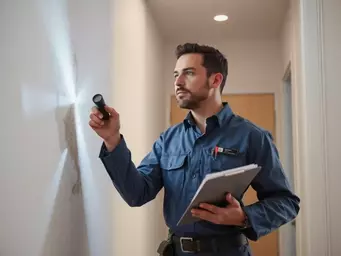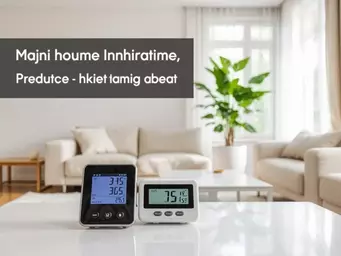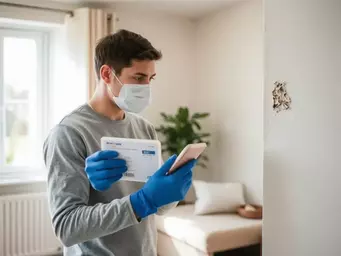Vulnerable Areas & Risks
- ✓ Attics (roof leaks, poor ventilation)
- ✓ Basements (dampness, inadequate drainage)
- ✓ Crawl Spaces (retained humidity, lack of ventilation)
- ✓ Health Risks: Allergies, Respiratory Issues
Subscribe to Mold Removal Care for expert advice on mold remediation, prevention strategies, and indoor air quality improvement.
Posted on: 2025-10-20
By: Jordan Blake
Ever wondered how a small leak could lead to big problems in your home? Understanding mold prevention is not just about aesthetics; it’s about safeguarding your family’s health and your property’s value.
Maintaining a safe and healthy living environment requires understanding mold and taking proactive steps. Below, we highlight the critical areas prone to mold growth and essential prevention strategies.
As homeowners, it's crucial to understand that mold prevention plays a vital role in maintaining a safe and healthy living environment. Mold can not only affect the aesthetics of your home but can also lead to serious health issues if left untreated. I’ve seen firsthand how mold can disrupt families’ lives, so let’s delve into why it’s essential to keep our homes free from mold.
Mold is not just an unsightly problem; it poses significant risks to our property and health. It thrives in damp, humid environments and can spread quickly if not addressed. Homeowners must be vigilant about mold because it can damage the structure of your home, leading to costly repairs and impacting resale value!
Being aware of mold's potential impact can motivate homeowners to take proactive measures. After all, the longer you delay addressing mold concerns, the more extensive the damage can become.
Let’s talk about health; exposure to mold can trigger a variety of health issues, especially for vulnerable populations like children and the elderly. Common symptoms include allergic reactions, respiratory problems, and even more severe conditions in some cases. I can’t stress enough how important it is to prioritize indoor air quality to ensure everyone in your home stays healthy!
Understanding these risks can empower homeowners to take the necessary steps to mitigate mold exposure in their homes.
Certain areas in our homes are more susceptible to mold growth due to moisture. Identifying these spots is crucial in preventing mold infestations. Let’s break down some of the most common areas where mold tends to thrive.
Attics, basements, and crawl spaces often experience high humidity levels, making them prime locations for mold formation. It’s important to regularly inspect and monitor these areas. Here’s why:
Understanding where mold is likely to grow is the first step in keeping your home safe. If you notice any signs of mold in these areas, take action immediately!
Did you know? Regularly checking and changing your HVAC filters can drastically improve your home's air quality and reduce mold growth. Aim to replace filters every 1-3 months, especially during peak usage seasons!
At Mold Removal Care, we believe that taking proactive steps is essential for maintaining a mold-free environment. Implementing effective mold prevention strategies can significantly reduce the risk of mold development in your home. Here, I’ll summarize essential tips and highlight the importance of regular maintenance in keeping your living space safe and healthy!
These simple yet effective strategies can help you create a healthier living environment. Remember, being proactive today can save you from more significant problems down the line!
Regular maintenance is crucial for preventing mold growth. Routine checks can help identify potential issues before they escalate into larger problems. I recommend setting a schedule to inspect areas prone to moisture and making repairs promptly. Keeping up with maintenance not only protects your home but also improves indoor air quality.
Additionally, maintaining your HVAC systems and ensuring they’re functioning properly can significantly decrease the moisture levels in your home. Regular filter changes and professional check-ups can go a long way in mold prevention!
Water damage is one of the primary contributors to mold growth. I encourage every homeowner to regularly assess their property for any signs of water intrusion. Look for:
By identifying these risk factors early, you can take action to address them, preventing mold from gaining a foothold in your home. Remember, vigilance is key!
Exposure to mold can trigger various health issues, including allergic reactions (sneezing, coughing, itchy eyes), respiratory problems (asthma attacks, difficulty breathing), and potentially more severe long-term respiratory diseases, especially in vulnerable individuals.
Mold thrives in damp, humid environments. Common moisture-prone areas include attics (due to roof leaks or poor ventilation), basements (from dampness or inadequate drainage), and crawl spaces (due to retained humidity and lack of ventilation).
To effectively prevent mold growth, it is recommended to control indoor humidity levels to below 60%. Dehumidifiers can be very helpful in achieving and maintaining these levels, especially in high-humidity areas.
Regular inspections are crucial. It's advisable to periodically check moisture-prone areas like attics, basements, and crawl spaces. Promptly addressing any water damage, leaks, or stains is also key to preventing mold from establishing itself.
Yes, eco-friendly approaches include using natural cleaning solutions like vinegar or baking soda for small mold spots. Additionally, utilizing mold-resistant products during home repairs and renovations can help prevent future growth.
Encouraging awareness about mold prevention is a shared responsibility among homeowners, renters, and property managers. At Mold Removal Care, we want to empower you to take charge of your living environment and actively participate in maintaining a mold-free home.
As I mentioned earlier, regular maintenance is crucial for preventing mold growth. By consistently monitoring your home and addressing any moisture-related issues, you’ll significantly reduce the likelihood of mold taking hold. Aim to make mold prevention a part of your home care routine!
I’d love to hear from you! What mold prevention strategies have worked for you? Sharing experiences not only fosters community but also provides valuable insights for others facing similar challenges. Let’s work together to promote healthier living spaces—feel free to drop your thoughts in the comments below!
Here is a quick recap of the important points discussed in the article:

 When it comes to mold, proactive measures are crucial. Ignoring its presence can lead to serious hea
When it comes to mold, proactive measures are crucial. Ignoring its presence can lead to serious hea
 Did you know that maintaining indoor humidity below 60% can significantly reduce the risk of mold gr
Did you know that maintaining indoor humidity below 60% can significantly reduce the risk of mold gr
 What if your home was hiding a silent intruder that could affect your health and property value? Mol
What if your home was hiding a silent intruder that could affect your health and property value? Mol